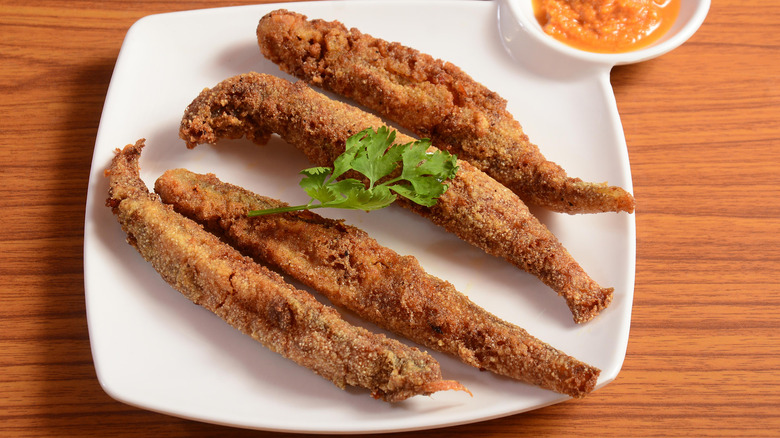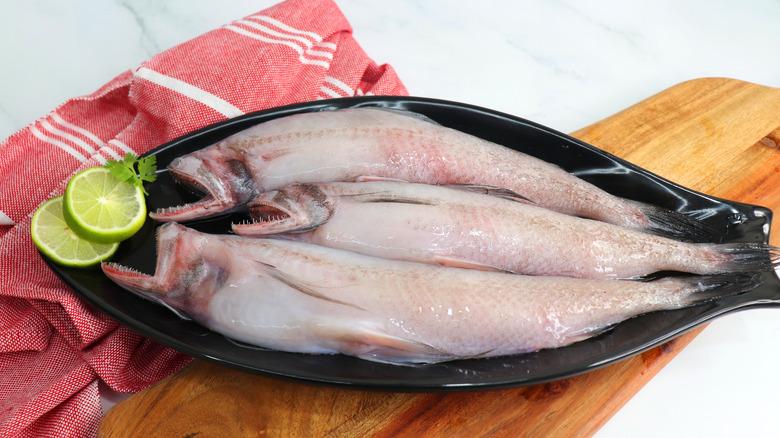You'll Probably Never Guess What Bombay Duck Actually Is
What do you think of when you hear "Bombay duck?" Perhaps a spicy curry dish from India? Or, maybe a variation of the Peking duck? Well, either way, you would be wrong.
Bombay is the former name for India's largest city, Mumbai. Bombay was a Colonial-era name that was renamed in 1995 after the Hindu goddess Mumbadevi, the city's patron deity, according to The Washington Post. And, just like most cities in India, the food is stunning there, too. Vada pav is a staple potato sandwich that is native to the city. This street food showcases fried potato on toasted white burger buns, making it an easy dish to love. The Bombay sandwich, which also takes after the city's previous name, showcases a killer combination of unlikely pairings. Thin slices of beetroot, boiled potatoes, cucumbers, tomatoes, onion rings, and mint chutney pile inside this sandwich that has become a popular street food in the city, according to CNN.
But, there is another delicacy that is beloved throughout the city: Bombay duck. But, it is not a duck dish at all. It's a fish.
Fiendishly Fishy
Mumbai's Bombay duck is a strange-looking fish, to put it lightly, but it has still managed to capture the hearts of many Mumbians. The living fish's looks can be off-putting with a gaping mouth that features a large underbite, small beady eyes, and pinkish translucent skin. The smell of the sun-dried delicacy polarizes people into loving or hating it, but the rich and complex flavor cannot be denied. The odor is described as "pungent," as per The Guardian. The fish is typically salted and dried under the hot sun on hot Mumbai beaches and has been for hundreds of years. According to the BBC, "drying fish gave off a stench so strong that British [colonizers] believed that it was harmful to their health, although they later grew to love them."
The dried fish can be eaten in a variety of ways, including being rehydrated and cooked into curries or dry-fried as a side dish. It is described as being extremely savory. Different regions can dictate how it is prepared as well. East Indians consider it a staple in their cuisine. It can be used as chutney, roasted, or fried. The BBC also notes that Maharashtrian communities typically fry it and turn it into a fritter, while others prefer to eat it dried with greens. No matter how it is prepared, this dish is a unique element of Indian cuisine.

